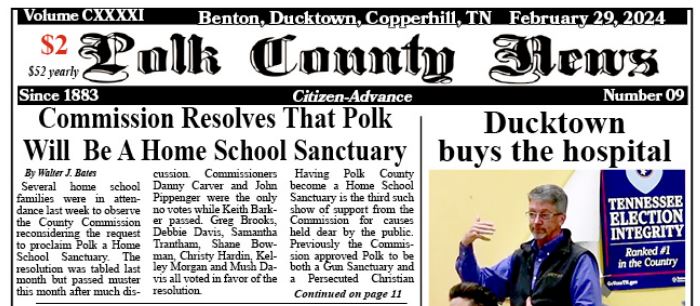SIGNS of the LAST DAYS: Spirit poured out on all flesh (Joel 2:28)

SIGNS of the LAST DAYS: Peace taken from the earth

SIGNS of the LAST DAYS: False prophets and false Christs

90 Years Ago, Narraganset Church of God Led in Benevolence
Narraganset Church of God was started by a women-preacher with only 10 members. Rev. Amelia Shumaker started the church only 15 days before the Great Depression began in 1929. She became a widow five years prior to moving to Chicago. Passing through the Great Depression by 1934, only five years after its establishment, the Narraganset Church of God was already a leader among the state benevolence ministries.
Located at 2254 N. Narraganset Avenue, the church officially took the name of its location in 1955. Early issues of the Church of God Evangel describe it as a South Side church, later corrected to the only Chicago Church of God. By 1994, the congregation has become one of only three Church of God locations in Chicago Metro. It was also where the first and only Bulgarian Church of God congregation in North America was founded also with only 10 members. (More from this timely research soon…)

Remembering Dr. Oliver McMahan (1954-2024)
On Tuesday, March 26, 2024, at the age of 69, Oliver “Dr. Mac” Lewis McMahan died peacefully at his home in Cleveland, Tennessee.
Oliver was born on November 15, 1954 in Honolulu, Hawaii. He was the son of Lewis Richard McMahan and Fiavaai “Fia” (Afalava) McMahan. He lived in Hawaii, where his parents were serving as missionaries, until he was ten years old. After leaving Hawaii, the family relocated to California to pastor churches in Salida and Modesto. Following high school, Oliver received a football scholarship to Cal Poly State University. During pre-season training for an upcoming All-Star game, he began to feel a heaviness of spirit and after much prayer, he decided to enroll in West Coast Bible College, instead, where he answered the call to ministry. It was here, also, he met the love of his life, Martha Hatcher. They were married in May of 1975.
Continuing his education, Oliver received his BA from West Coast Bible College in 1975. He then attended the Mennonite Seminary in Fresno for a year while pastoring the Traver Church of God. The following year he transferred to Brite Divinity School, Texas Christian University, where he earned his M.Div in 1978. In 1984, he received his D.Min also, from Brite Divinity School, TCU. In 1997, he received his Ph.D from Georgia State University.
Dr. McMahan held positions of Associate Professor of Bible and Dean of Students at Northwest Bible College in Minot, North Dakota and Dean and Professor at Jimmy Swaggert Seminary and Bible College in Baton Rouge, Louisiana.
Dr. McMahan was honored to serve on the Executive Council of the Church of God International from 1994-1996 and 2006-2010. He served his church in many capacities, with over 25 years as pastor, associate, evangelist and Bible Convention and Camp-meeting speaker. He was also a published author of multiple books; chapters in textbooks for clinicians; and articles in many research publications including the Journal of Psychology and Theology.
At the time of his death, Dr. McMahan was serving as Head Pastor of Cross Pointe Church of God in Cleveland, Tennessee and serving as the V.P. for Institutional Effectiveness and Accreditation at the Pentecostal Theological Seminary. He was also providing counseling at Health Management Services in Cleveland.
During these years of education and ministry, Oliver and Martha were blessed with three children. Their first born, Sarah Elizabeth, died at the age of six months. God gifted them with two more children, Jonathan and Holly, to complete their family and now, they have six grandchildren and three great grands (and two on the way). Oliver loved his family whole heartedly and always sought the best for them.
Dr. Mac, as he was affectionately known by many, was preceded in death by his parents, Lewis McMahan and Fia McMahan, his brother, Grady Garna McMahan and his daughter, Sarah Elizabeth McMahan.
He is survived by his wife of 48 years, Martha McMahan; son, Jonathan Eric McMahan; daughter, Holly Beth (Ben) Salicco and grandchildren Haley (Cory) Houk; Sarah (Lucien) Allison; Olivia McMahan; Sophia Salicco; Josiah Salicco; Emma McMahan; and three great grandchildren, Scarlett Houk, Charlee Houk and Ellijay Allison.
The family will receive friends on Friday, March 29th, 2024 from 4- 7pm at Poole Funeral Home & Cremation Services of Cleveland, 3000 Ralph Buckner Blvd NE Cleveland, TN 37311.
Dr. McMahan will lie in state at the Dixon Chapel from 10 am- until the service hour at 11:00 am with Dr. Michael Baker officiating. Interment will follow at Mt. Olive Cemetery 126 White Oak Rd Cleveland, TN 37312.
Condolences may be shared at pfhcleveland.com
Arrangements are entrusted to Poole Funeral Home & Cremation Services of Cleveland.
SIGNS of the LAST DAYS: Universal Apostasy

SIGNS of the LAST DAYS: Watering down of the gospel

SIGNS of the LAST DAYS: Increased worldly knowledge

SIGNS of the LAST DAYS: Increase in the wickedness

HOMESCHOOL SANCTUARY COUNTY








